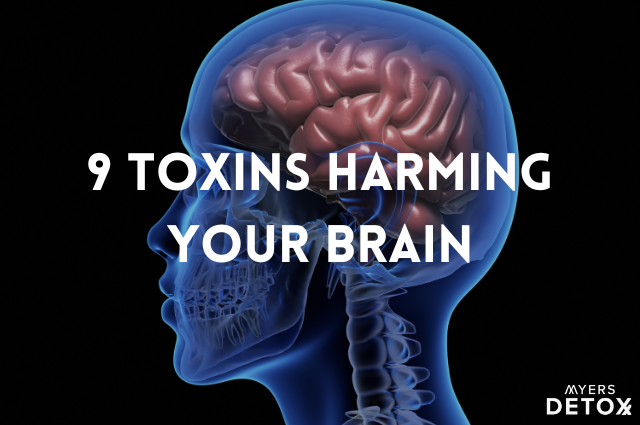Thallium is a toxic metal that causes chronic fatigue and many other health issues. It is naturally occurring in petroleum deposits and thus is released into the air by car exhaust. For this reason, thallium toxicity is prevalent in those who live in urban environments. Read on to learn how to detox thallium.
How You are Exposed to Thallium
Thallium is released into the biosphere from both natural sources and human activity. It is normally present in the environment at low levels; however, industrial activity has greatly increased its content.
Atmospheric emission and deposition from industrial sources have resulted in increased concentrations of thallium in the vicinity of cement works, mineral smelters and coal-burning facilities. Due to thallium’s constant release in the atmosphere, increased levels of thallium are found in vegetables, fruit and farm animals, most notably in kale.
You are also exposed to thallium in the following ways:
- Coal combustion – fly ash
- Vegetables – both root vegetables and leafy vegetables tend to accumulate thallium from contaminated soil. Cruciferous vegetables, esp. kale and cabbage are problematic in this regard due to their high sulphur content, which attracts thallium.
- Fruit and grains both can accumulate thallium, but to a lesser extent than vegetable crops.
- Seafood – fish caught from lakes or rivers subject to wastewater or runoff from nearby industrial plants may be contaminated.
- Drinking water – municipal water supplies generally have low levels but some spring waters have appreciably higher thallium content
- Shale oil & Shale oil by-products –Shale oil itself currently provides around two thirds of total US crude oil production and could potentially contribute to increased human exposure from motor vehicle exhausts. However, the waste products of shale oil refining processes are presently used in agriculture as soil additives and may contain significant quantities of both cadmium & thallium, which then gets into fruits and vegetables.
- Hot mineral springs – associated with sulphides
- Cement work producing contaminated dust and aerosol particles
- Ferrous iron and non-ferrous metal (e.g. zinc, copper) smelting operations
How Thallium Gets Into the Air – Fly Ash From Coal Combustion
Fly ash is a coal combustion product that is composed of the particulates (fine particles of fuel) that are driven out of coal-fired boilers in modern manufacturing. Other uses of fly ash include asphalt concrete, soil stabilization and embankments and geopolymer manufacture.
Today, an appreciable quantity of fly ash now ends up in landfills and a substantial portion is used in the production of cement.
In modern coal-fired power plants, fly ash is generally captured by particle filtration equipment (aka scrubbers). Many coal-fired manufacturing plants in China go unregulated without the benefits of scrubbers and release large amounts of fly ash and its toxins into the world’s atmosphere.
In the past, before scrubbers were used to protect the environment, fly ash was generally released into the atmosphere, whereby it deposited in soils downwind from the coal-fired power stations. As a result, there are large amounts of thallium in soils where produce is grown.
Depending on the chemical composition of the coal, fly ash may contain not only thallium, but significant quantities of arsenic, beryllium, boron, cadmium, chromium, hexavalent chromium, cobalt, lead, manganese, mercury, molybdenum, selenium, strontium and vanadium.
Toxic Effects of Thallium
Upon breathing in thallium, it rapidly enters the bloodstream and then accumulates in bones, kidneys and the nervous system. Stomach and intestinal ulcers, alopecia and neuropathy are considered as classic syndromes of thallium poisoning. Other symptoms include fatigue, insomnia, internal bleeding, myocardial injury and potentially death. The ingestion of more than 1.5 mg of thallium per kg of body weight may be fatal. (1)
Thallium inhibits Na-K ATPase, which is a key enzyme needed to pump potassium in and sodium out of cells across plasma membranes. It thereby maintains a sodium gradient essential for the transport of vital nutrients into cells.
Thallium appears to be particularly toxic to mitochondria and is synergistic in this regard with other heavy metals. Patients with Chronic Fatigue Syndrome with or without Fibromyalgia often have high thallium levels in their urine (> 0.6 mcg / g. creatinine).
Types of Thallium
Thallium is found naturally in two oxidation states: monovalent Tl (I) and trivalent Tl (III). The trivalent state is vastly more toxic to mammals than the monovalent form. In soils, a considerable amount of thallium is bound with sulphides (approx. 70 %), and the remaining content is bound with aluminosilicates and organic compounds.
Thallium is quite toxic even at very low concentrations and tends to accumulate in the food chain once it enters the environment. Thallium and thallium-based compounds exhibit higher water solubility compared to other heavy metals. They are therefore also more mobile (e.g. in soil), generally more bioavailable and tend to bioaccumulate easily in living organisms.
Thallium and Hair Tissue Mineral Analysis (HTMA)
Rarely, if ever, will you see thallium on a Hair Tissue Mineral Analysis (HTMA) from Trace Elements Inc. (TEI) above 0.0005 mg%. We’re not sure why. The research literature indicates that thallium should be readily measured by the same ICP-MS mass spectroscopic methods as used by TEI and other commercial laboratories.
HTMA, however, is still very useful for detecting thallium toxicity. One can indirectly assume the presence of thallium toxicity by low levels of Potassium (K) on an HTMA. Thallium inhibits Na-K ATPase, which is a key enzyme needed to pump potassium in and sodium out of cells across plasma membranes. This disruption of potassium into the cells is what causes Potassium (K) to show as low on most people’s Hair Tissue Mineral Analysis.
One detects the presence of thallium on an HTMA by observing the low potassium to thallium (K/Tl) and rubidium to thallium ratios (Rb/Tl). These ratios can only be determined with a TEI lab test, as other labs do not test thallium and rubidium. When both of these ratios are relatively low, we can suspect that one is suffering from thallium accumulation in the body.
Once an individual spends a period of time detoxing thallium, Potassium (K) on an HTMA finally begins to increase as the potassium channels are no longer being blocked. I have seen this over and over in my patient population.
On a side note, thallium accumulates more readily in the nails than the hair. Nails can also be tested for thallium and other metal toxicities.
Detecting Thallium with a Urine Toxic and Essential Elements Test
Thallium toxicity can most accurately be detected in urine with a Urine Toxic and Essential Elements Test. Due to the fact that thallium is transported by potassium channels throughout the body, low potassium to thallium (K/Tl) and rubidium to thallium ratios (Rb/Tl) on an HTMA are often correlated strongly with significant urinary thallium excretion in both Baseline urine & post-DMSA urine samples. You can do a Urine Toxic and Essential Elements Test to confirm thallium toxicity.
Best Supplements to Detox Thallium
- Mitochondria Detox: this kit includes the Myers Detox Activated Silica and CitriCleanse grapefruit citrus pectin. Together, these supplements are the most potent and effective Thallium detox. Learn more at MitochondriaDetox.com
- Potassium: The strongest antagonist to and effective agent against thallium is the mineral potassium. This is because thallium has a similar charge and ionic ratios to potassium and is distributed in the body much the same way (2, 3). I recommend taking 2000mg a day of ionic potassium and eating potassium rich foods.
- Prussian Blue: Prussian blue binds to thallium, keeping it within the intestinal tract, which then excretes in the stool. Thus, preventing thallium from entering the body and accumulating (4, 5). Prussian Blue was traditionally used for thallium detox, but it is relatively expensive and not without side effects.
How to Detox Thallium
I have found that a special form of silica called orthosilicic acid OSA is incredibly effective at supporting your body’s natural detox mechanism to help reduce the burden of thallium.
Orthosilicic acid is gentle on the system and works to keep a range of trivalentmetals – including thallium, aluminum, arsenic, bismuth, tin and cesium – out of the body so that you can maintain normal health – as well as support your mitochondrial and brain health.
That’s why I put orthosilicic acid OSA in my Ageless AF formula. I use it with many of my clients to support the detox of thallium.
OSA also serves as a natural mobilizer of thallium. It supports the body’s natural ability to remove thallium from the brain, tissues and bones. After that, you need a binder to absorb the dislodged thallium and safely remove it from the body. For this purpose, I recommend CitriCleanse grapefruit citrus pectin.
You can get both of these products including instructions on how to use them for the most effective thallium detox at MitochondriaDetox.com. Together, AgelessAF and CitriCleanse are an effective two step process to support your body’s detox pf thallium. I recommend it to any clients currently suffering from thallium toxicity.
How Long Does it Take to Detox Thallium?
It’s important to know that thallium requires about two years to dislodge from storage sites in the body. Even then, complete reversal of all symptoms may not be possible, depending on the level of toxicity and damage suffered.
Another reason it can take so long to detox thallium is that it becomes deeply lodged in the body’s tissues. It must be detoxed slowly. If it were eliminated very quickly, a person would be in danger of greatly exacerbating their toxic symptoms with a hasty elimination.
Fatigue is the main symptom experienced during thallium detox. Thallium detox can make people very tired while the body is processing the toxin during a detox process. One must detox at the rate at which they tolerate.










